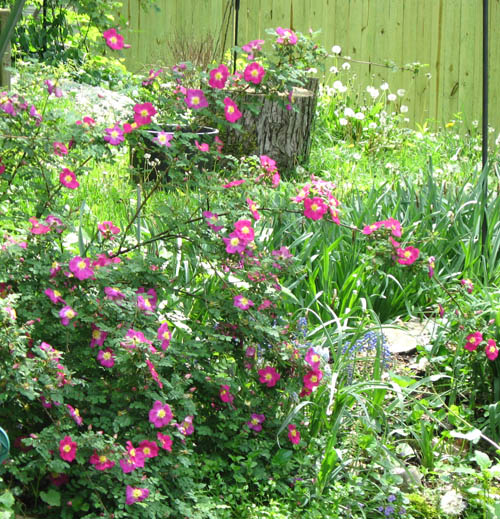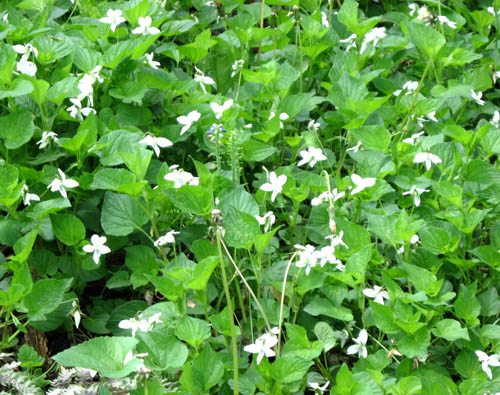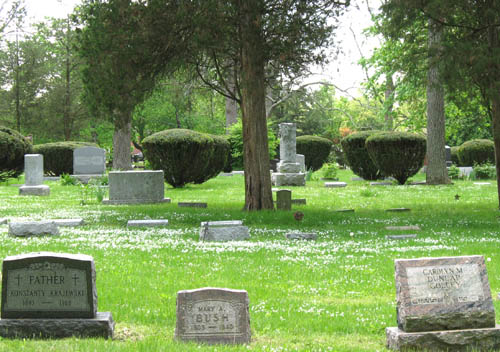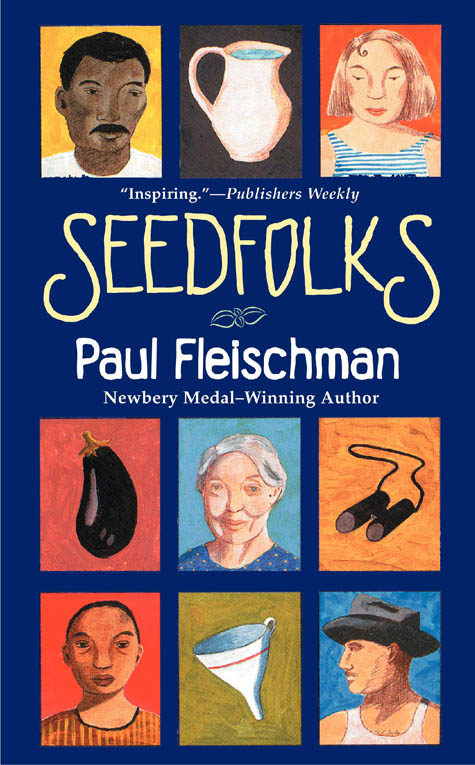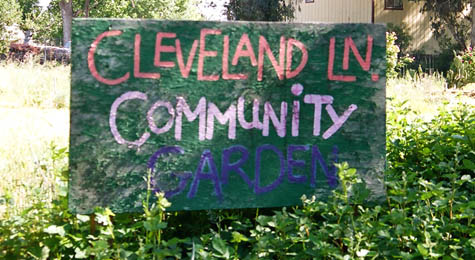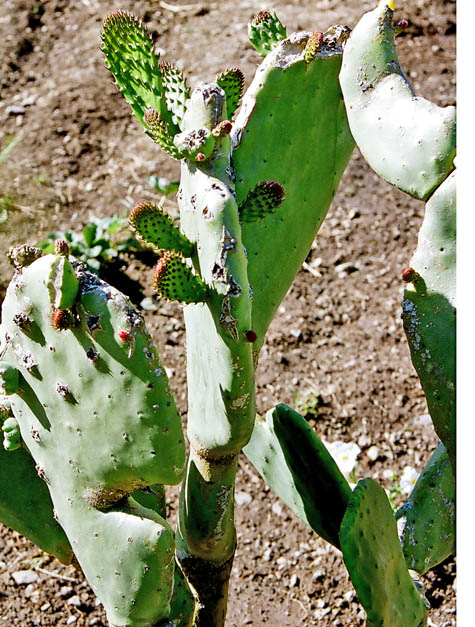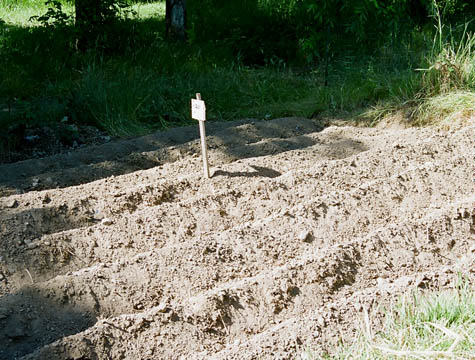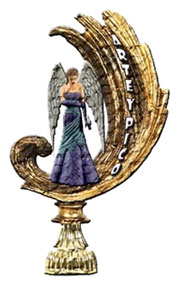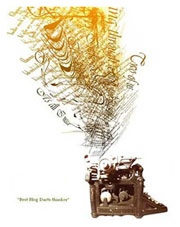
Shhhh. This is kind of a secret. I almost never tell anyone this. I think only one or two of my neighbors know. But I’m sure you won’t tell. I’m rather bonded to a group of scrubjays. I think it’s dreadful that scrubjays don’t have the word “blue” in their name, don’t you? So maybe I could say I’m bonded to a family of blue scrubjays. There. That would make me feel a lot better. They need to be fully honored. I’m quite close to them, as they would tell you.
It all started three years ago, and, in fact, my very first post on Plant Whatever Brings You Joy was about these very birds, so some of you might actually recall that that first year I came here they (blessedly) built a nest just outside my kitchen window, which my daughter noticed and brought to my attention. One of the things I never mentioned, that in retrospect was one of the very most endearing things that happened that year, was that one of the parents came back after the babies were fully fledged and cleaned out the nest. How dear is that?
The next year for some divine reason I was standing at that very kitchen window when a pair of them returned and I could actually see that one was animatedly showing the other the old nest and was picking at it, clearly attempting a good sales job on where they might start another family. The idea, I learned, was rejected, and I noticed instead that they wisely chose a thicker tree in the back yard which provided not only better protection in terms of the nest not being as readily seen by predators (think meow–but not Maine Coon or Siamese meow, oh, NO!) but also meant that fledgling babies landing on the ground prior to learning to fly would most likely land on this side of the fence, not in the alley. No guarantee, mind you, but much more likely. And there are so many places to hide once in the back yard! The first year, much to my horror, while the babies fledged on this side of the fence, they were immediately exposed to the front street, as they did not have the safety of the big back yard. Indeed, I came out and found a young woman excitedly talking on her cell to a friend, “You won’t believe what I found! There’s a baby bird on the sidewalk!” Enter at rapid speed your trusty blogger, scoop up baby in hands and rush him back to the side of the house. Put up puppy fencing and cover with blankets and hope for the best. Oh, it was hysteria, let me tell you.
So last year it was SOOO much better. I only saw one bright-eyed baby on the ground. Oh, the innocence was enough to take your breath away. And did. And I ran in the house for my camera but he was instantly gone. I can only hope that had a happy ending.
And that brings us to May 2008. I knew they’d chosen that same thick tree. And, oh, dear readers, I have to confess and apologize that in spite of my best efforts, you will have to apply your own imaginations as my photos of this event are, well, lacking. Yes, they are. However with the slightest efforts of your most creative minds, you will follow along and get the picture, so to speak. Right? I thought so. Thank you for your forbearance.
So here is the tree they chose for the nest the last two years:
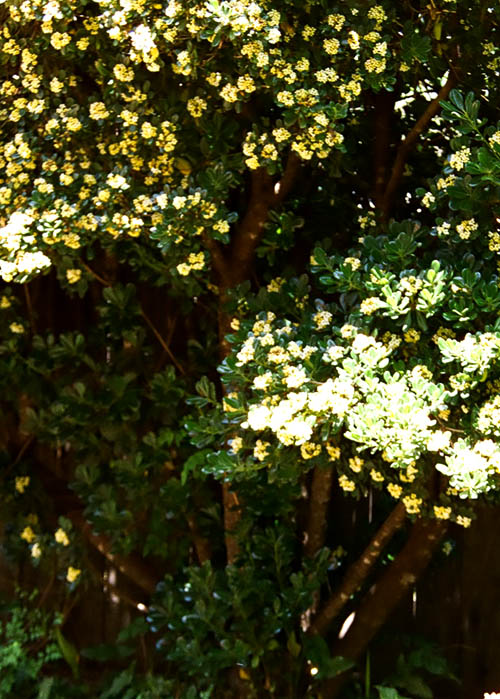
I don’t even think it is a tree, do you? I think it’s a bush gone wild. Does anyone know what it is?
Anyway, believe it or not, in March I saw a blue scrubjay in the nest outside the kitchen window with a mate in tow, trying the sales job again, and again the wisdom of the second mate won out for the second time. Whew! In fact the nest was so hidden this time I missed almost all of the activity until suddenly I heard the unmistakable sound of fledglings begging for food back in the quince bushes way in the back of the garden. Animal alert. The doggies were clearly informed that the scrubjays reigned for at least a week and all their outdoor activities were going to have to be monitored closely until I knew the babies had their wings developed. I alerted the neighbors to please watch their Jack Russell terriers and their cats. They respectfully agreed. (They are getting used to my ways at last.)
Imagine my horror when I caught a grey squirrel trying his best to eat one of the babies! A mama jay was squawking loudly, rushing at him, warning him to stay away. I engaged Conner to bark at the squirrel, who happily obliged and after being harrassed for a couple of loud and harrowing minutes by an angry mother jay, an alarmed blonde and an obliging Border Collie he finally surrendered and left the scene.
It’s tough being a fledgling, I’ll tell you.
Next day I found one of them back in the fig tree looking stronger than I might have expected. I watched, enchanted. One of the parents spotted me and half heartedly sounded an alarm, but these birds know me well and trust me and her alarms were soon interrupted by a stash of ants she found climbing a branch, which she began to nibble, only to sound a call once or twice just to keep me on my toes that she was watching. Yes, I know. I watched the baby for awhile, comforting myself that flying looked intact.
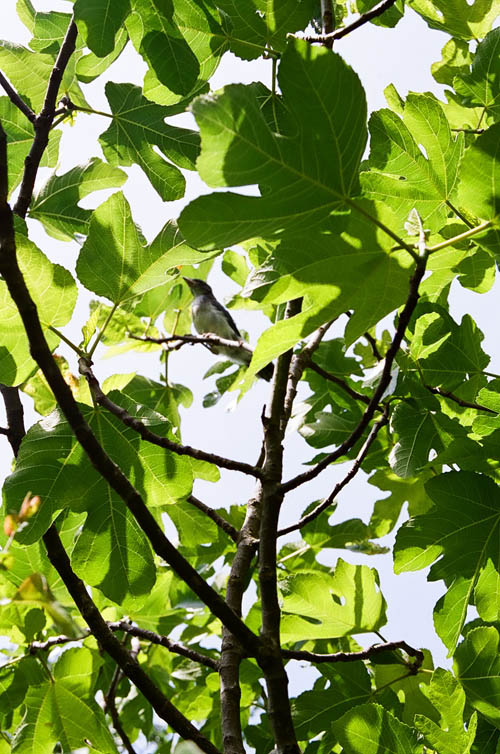
In the days that followed I found two in the fig tree and simultaneously heard a third being fed in the tree that holds their old nest. Three babies is a good thing. This very much warmed my heart.
Knowing that the parents have so many mouths to feed I resumed putting peanuts on the sidewalk next to the camelia tree where they had their original nest. It’s Our Spot, and they know it. If I whistle for them (we have a special call) they land on the fence to see if there are peanuts. I did this yesterday, and sure enough, both parents came almost immediately. They will teach their offspring about this little feeding ground and the cycle of life and love will continue.

Love and garden blessings,
Kathryn xox
Posted on May 20th, 2008 by Kathryn
Filed under: Animals | 28 Comments »



